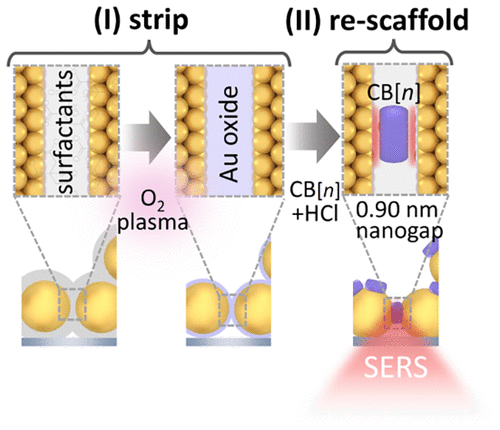Developing useful SERS sensing materials and techniques
Surface-enhanced Raman scattering (SERS) is a promising optical sensing technique enabling trace and even single-molecule detection. Self-assembled random close-packed arrays of Au nanoparticles with sub-nm gaps can be used as a sensitive SERS substrate. Using oxygen plasma etching or electrochemical cleaning, all molecules on the nanoparticle surface can be removed and replaced multiple times with scaffolding ligands that deliver extremely consistent gap sizes below 1 nm and tailoring of the nanogap chemical environment.
The resulting aggregate layers are easily accessible from opposite sides by analytes and light, enabling high-performance fluidic sensing. The SERS substrates can be cyclically cleaned and reused, and we are investigating sensing of urine, neurotransmitters, and volatile organic compounds, among others.

Key publications:
People working on the topic: Marika Niihori, Sarah Sibug-Torres, Elle Wyatt, Nicolas Spiesshofer, Ibrihim Kanber, James Beattie